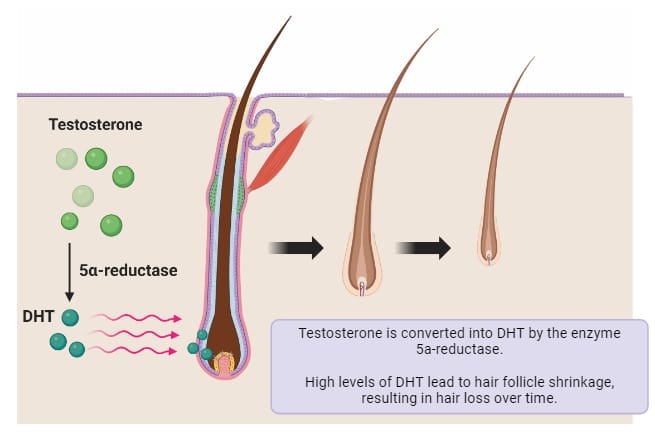The short answer is yes. You are safe to take a short-haul flight 7 days after your hair transplant and a long-haul flight 14 days after. This is to allow the swelling in your scalp to reduce and avoid risking injury to your new grafts and overall health.
However, there are still important things to consider while on holiday. Important areas include:
- Flying after your hair transplant
- Exposing your hair transplant to direct sunlight
- Swimming in pools or the ocean
- Exercising or sweating on holiday
In this guide, we will take you through the considerations needed before travelling with a hair transplant.
What is a hair transplant?
A hair transplant consists of moving hair follicles from the back and sides of the scalp or from other parts of the body to areas experiencing thinning or baldness. The two primary techniques employed for this procedure are FUE and FUT hair transplant surgery. After the surgery, it is crucial to follow specific aftercare guidelines for hair transplants, particularly regarding recovery and the safety of travelling after the procedure.
If you are considering travelling abroad for your hair transplant, be aware that several key factors could jeopardise both the success of the procedure and your overall health if you travel too soon.
Why Travel Timing Matters After a Hair Transplant?
Travelling too soon after your hair transplant procedure can affect how well your results turn out. In the first 7–14 days, the transplanted grafts are still fragile and need time to settle into your scalp. This is also when swelling, scabbing, and sensitivity are at their most prevalent.
Travelling can expose you to germs, cause dehydration from flying, or even lead to minor head injuries, all of which can raise the risk of infection or loss of grafts. Moreover, many clinics ask for follow-up appointments within the first few days after the procedure. Therefore, we suggest waiting before going on vacation.
Is Flying Possible After a Hair Transplant?
If you are planning to take a flight directly after your hair transplant, you need to be aware that this could put you and your hair transplant at risk. If you fly too early and are suffering from swelling in your scalp following surgery, cabin pressure can make this swelling worse across the forehead and eyes, making them difficult to open.
To reduce the risk of this happening, we recommend not flying after your hair transplant for at least 7 days and allowing the scalp to heal adequately.
Exposing your hair transplant to direct sunlight
Vacations are a time of relaxation, with many holidaymakers choosing to sunbathe by the beach or pool. While recovering from a hair transplant, it is crucial to keep your newly implanted grafts out of direct sunlight, especially when the area is still red and inflamed.
Exposing your new follicles to intense UV rays can harm them. Therefore, it is advisable to wear a cap in direct sunlight for up to 2 months after surgery. Sunburn to the scalp during the healing period may result in a heat rash, which can persist for several months, if not longer.
Can I Swim After a Hair Transplant?
Swimming in the sea, hot tubs, and pools during the holidays is a popular attraction. However, the water in these conditions can be dirty and pose a high risk of infection to your new hair transplant.
We recommend that you do not swim in the sea for at least 2 weeks after your procedure. Pools should be avoided for at least 1 month. If your hair transplant is still red or sore after 2 weeks, we recommend waiting even before swimming to allow the area to heal.

What Should I Pack If I’m Travelling After a Hair Transplant?
Smart packing can significantly impact your recovery after a transplant, especially when travelling. Everything included within your post-operative bag should be carried along.
Begin with the medications prescribed by your doctor—these are important for managing pain, reducing swelling, and preventing infections.
Don’t forget to bring a saline spray or aftercare mist to keep your scalp hydrated and clean.
A loose cap or wide-brimmed hat is crucial for sun protection, but steer clear of anything tight that could irritate the grafts. Make sure to include a mild, non-irritating shampoo for gentle cleansing.
A U-shaped travel pillow will support your neck without pressing on your scalp during flights, and having a clean pillowcase or towel is key for hygiene wherever you rest. Travel light, but make scalp care a priority.
Get in Touch
Ready to elevate your hair restoration journey? Book a free consultation call with our leading UK hair transplant clinic. If you are based in Birmingham, you can reach out to our FUE hair transplant clinic in Birmingham. We also offer virtual consultations for patients in Manchester and Leicester.
Our award-winning team, including leading London hair transplant surgeons Dr Fernando and Dr Vara, is here to support you every step of the way.
FAQs
1. How long before I can wear a hat or go in the sun?
Your post-operative trucker cap can be worn after 4 days, and loose-fitting and wide-brimmed hats can be worn after 7 days. Avoid tight hats, such as baseball caps, for the first 2 weeks after surgery.
If the skin is scab-free by the 2-week mark, sunscreen can be used again.
2. Can I work out, sweat, or have sex post-op?
Avoid sweating and strenuous activity for at least 14 days after surgery due to the risk of infection, scalp irritation, and dislodging grafts.
3. What if I experience swelling, infection, or bleeding while away?
Minor swelling of the scalp is normal and usually subsides within a week after surgery. Things to watch out for include a fever, worsening redness, pus, heat and persistent pain in the areas operated on. These signs warrant immediate contact with your clinic or a local doctor.
4. Can I style my hair or use products during recovery?
Typically, styling products (like gels, sprays, Toppik fibres) can restart 3-4 weeks after surgery. Avoid hair dryers and towel drying your hair for at least 2 weeks.
Share:
Authored by
Reviewed by
Book a Consultation
Related Blogs
What Happens If You Stop Using Minoxidil
November 2, 2025
If you’ve been consistently applying minoxidil to support your hair growth, have you ever wondered what happens…
Unlocking the Secrets of Anagen Follicles
October 23, 2025
Have you ever glanced at a mirror and wondered why some of your hair grows fast and…
Does Finasteride Cause Erectile Dysfunction?
October 22, 2025
Finasteride is one of the most promising medicines against male pattern baldness and benign prostatic hyperplasia (BPH)….
Zinc Supplements After Hair Transplant Surgery: What You Need to Know
October 7, 2025
Zinc is an essential nutrient in wound healing, tissue repair, and the healthy development of hair follicles….
What to Eat After a Hair Transplant: Essential Nutritional Guide
October 5, 2025
After the stress, needles, and surgeries, food becomes more than nourishment. A warm bite, a familiar flavour,…
Hair Loss Treatment That Works: A Complete Guide for 2025
October 3, 2025
Millions of men, women, and teenagers have hair loss problems. In 2025, hair restoration is going through…
What is an FUE Hair Transplant?: A Comprehensive Guide to Procedure, Recovery, and Results
October 3, 2025
Hair transplant surgery has gained popularity over the years, with more people now comfortable taking care of…
Does Omega-3 Deficiency Cause Hair Loss? Evidence, Mechanisms & Nutrition Guide
September 16, 2025
Omega is an essential fatty acid required for a healthy body, skin and scalp. Modern-day diets are…
When Can You Use Nizoral After a Hair Transplant?
September 12, 2025
Nizoral is a medicated shampoo that contains the antifungal drug ketoconazole. This shampoo acts against fungal infections…










